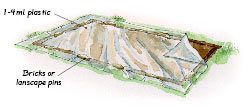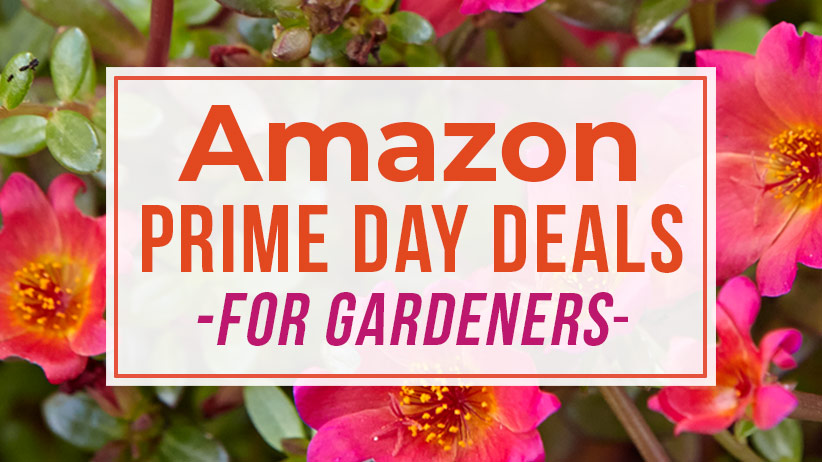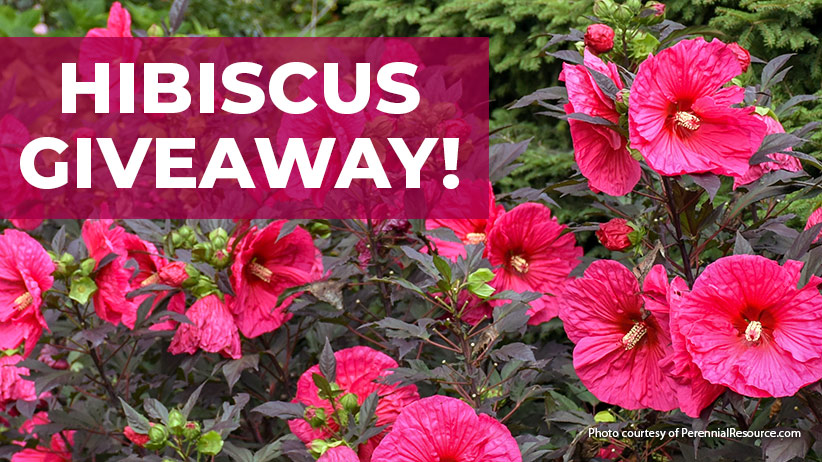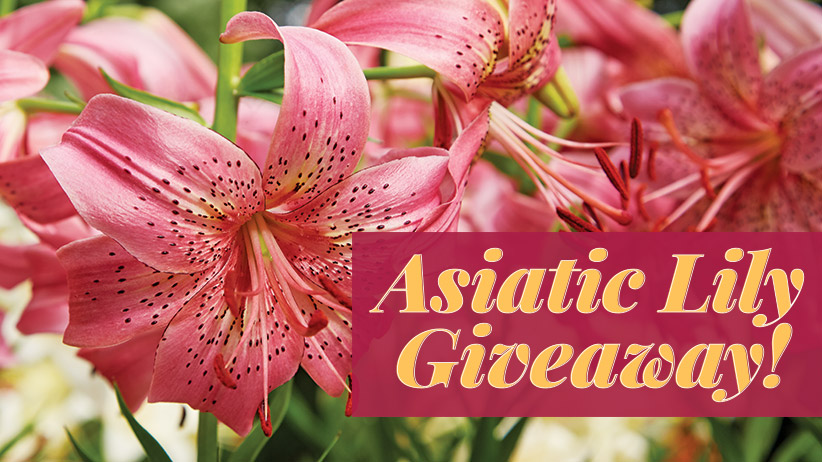Gardening for the environment has never been so easy. If you enjoyed the Go Green! story in
Garden Gate’s issue 79, we have even more tips to help you “green” up your garden below.

1. Regional lawn care
Lawns aren’t evil, just misunderstood. Keeping the grass around your home looking good doesn’t have to come at the expense of the environment. Some gardeners don’t like the idea of lawns because so often, people overfertilize. When this happens, the excess chemicals run off, polluting our groundwater.
Did you know that cool season grasses, such as fescue, bluegrass and rye will do just fine with only one annual application of nitrogen fertilizer in the fall? Fall fertilizing helps the lawn green up earlier the following spring. The best time to do this is after top growth has stopped. For most areas in the Midwest and Northeast, this is usually between Halloween and Thanksgiving or after 10 days of daily temperatures below 50 degrees. Warm-season grasses such as Bermuda, zoysia and St. Augustine’s, more commonly grown in the South, can also get by on one application. In zones 8 and warmer the lawn will probably need an additional feeding since it’s growing all year.
For specific details on caring for a lawn in your area, check with your county extension agency. You can also find helpful information from these two sites:
For Northern gardeners:
www.gardening.cornell.edu/lawn/
For Southern gardeners:
www.turffiles.ncsu.edu/

2. Garden Gate rain garden
A rain garden filters rain from a house’s downspout. That way, the water doesn’t wash off into the street with pollution from the house and lawn. The water is absorbed by deep-rooted plants. Want to plant one yourself?
Click here to download our free plan.

3. Build a rain barrel
Rain gardens aren’t the only solution to runoff. Save that water in a rain barrel and use it later to water thirsty plants. Find out how you can
make your own with this plan.

4. Plant for pollinators
Butterflies, bees, hummingbirds and moths play an essential role in our gardens. They pollinate the flowers we enjoy and our kitchen gardens filled with tomatoes, cucumbers and peppers. And they take care of our agricultural crops, too. Unfortunately, these beautiful and helpful creatures often have a hard time finding safe habitats. Many insecticides used in gardens do get rid of pests but also poison “good” bugs and even hummingbirds. But if you’re going green by avoiding pesticides anyway, your garden will become a haven for these winged visitors. Encourage them to stick around by providing food, water and shelter. Below are some links for plants and plans to help you make a home for these winged creatures.
 Butterfly plants
Hummmingbird friendly plan
Butterfly plants
Hummmingbird friendly plan
These pint-sized birds need a pint-sized place to get a drink.
Build this easy hummingbird dripper.

5. Don’t forget the birds
Most birds aren’t pollinators but they’re fun to watch, and some species even eat insects. So they’ll benefit, too, from your sparing use of pesticides. More insects mean more snacks for hungry birds. And seed eaters will be eating from chemical-free plants.
Want to learn more about how to keep your neighborhood birds happy?.You can with this article on Bird-friendly gardening from issue 35 of
Garden Gate. Otherwise you can buy the whole story which includes a list of bird-attracting plants and a plan online at GardenGateStore.com. Here’s the link:
www.gardengatestore.com/birdfriend.html
6. Organic pest solutions
Keeping critters from chewing up your garden doesn’t have to involve harsh chemicals. To get rid of the “bad guys” without harming the “good guys” or your family and pets, try these organic solutions.
| Pest |
Solution |
Brand |
Source |
| Caterpillars, leafminers, thrips, termites and certain beetles |
Spinosad |
Conserve®, Spin Tor®, Success® and many others |
Local garden centers or Peaceful Valley Farm & Garden Supply at 888-784-1722 or www.groworganic.com |
| Slugs and snails |
Iron phosphate |
Sluggo® or Escar-Go!® |
Peaceful Valley Farm & Garden Supply (Sluggo) at 888-784-1722 or www.groworganic.com or Gardens Alive (Escar-Go!) at 513-354-1482 or www.gardensalive.com |
| Aphids, scale, mealybugs, spider mites |
Insecticidal soap |
Safer®, Schultz®, Concern® |
Local garden centers |
| Japanese beetle grubs |
Beneficial nematodes |
Brand names can vary, the most important thing to look for is the right nematode.For example Heterorhabditis bacteriophora nematodes will target Japanese beetle grubs. |
Buglogical Control Systems at 520- 298-4400 or www.buglogical.com |
| Mosquito larvae |
Bacillus thuringiensis (Bti) |
No-Squito™ |
Garden’s Alive at 513-354-1482 or www.Gardensalive.com |
 Tip:
Tip: When you’re shopping, look for the Organic Materials Review Institute (OMRI) certification label. OMRI is a nonprofit organization that determines which products are safe to use in organic farming. And if it’s okay for the food we eat, you don’t have to worry about using it on ornamentals, either.
Deer
Insects aren’t the only critters to make a meal of your plants. Deer have reached record populations in many areas.
Check out this link for ways you can keep them from making your garden their buffet line.
7. Chemical-free weeding
Starting a new garden bed is hard work, especially when there you need to get rid of a lot of lawn or weeds. Instead of getting out a bottle of chemicals, use the sun and a piece of plastic to get rid of your weeds. It’s called solarization.

You need a piece of clear polyethylene plastic 1 to 4 ml. thick, some landscape pins or bricks to weight it down and a bit of patience — this process takes 8 to 10 weeks. Timing is important, too. Make sure you have your plastic in place by the end of June so your soil gets the full heat treatment of the hottest days of summer.
Start by tilling or turning over the sod and weeds in the area for your new garden. Remove or break up any large clods of dirt. Rake the soil smooth, then give it a good soaking. Now lay down the plastic and anchor it in place with the pins or bricks. Here’s the easy part: Leave the whole thing alone for 8 to 10 weeks. According to a study by Oregon State University, the heat from the sun will kill many weeds, weed seeds, disease-causing organisms and insect pests in the top 3 to 6 inches of soil. Heat also increases the number of beneficial soil organisms. One common weed, purslane, appears to be resistant to solarization. But purslane has shallow roots, so it’s easy to pull by hand or remove with a hoe.
Once the waiting is done you can remove the plastic, and start planting.

8. Drought-tolerant plants
The amount of water we use is a growing concern in a lot of areas. To keep your water use down, grow plants that don’t mind long stretches without a drink.
Here’s a list of plants to get you started.

9. Peat alternative
Do you use a lot of potting mix with added peat moss for your containers? If so, you may worry that peat bogs can’t keep up with the demand. Use coconut coir instead. You get the same good drainage and water-holding capacity as peat, but it’s made from leftover fibers after coconuts are processed, so it’s renewable. Many potting soils have added coir in their mix now. Or add your own coir with products like Peat Eliminator™, available at garden centers and hardware stores.

10. Reader-tested compost tips
Composting is a great way to recycle yard waste and reduce the amount of stuff sent to the landfill. Here are a few tips from
Garden Gate readers to make composting easier.
Quicker compost
Judy Everson, Illinois
It takes a lot of time for kitchen waste to break down into compost and Judy Everson doesn’t like to wait. She’s come up with a compost alternative using organic scraps and a second-hand blender.
She keeps a bowl in the sink throughout the day for all her vegetable scraps. Then, using a blender she bought at a garage sale, Judy blends the scraps at the end of the day. Since her soil is alkaline, she uses old coffee (which is acidic) as the blending liquid. If your soil is neutral or acid, just use water. Once the scraps are blended she’s ready to pour the mixture into one of several holes she has in her garden. The holes are about 12 in. wide and 10 in. deep. After pouring the blended mixture in the hole she adds a little soil to get the microorganisms working. Then, for safety and to keep pests out, she covers it with a piece of flagstone. You could also use a patio paver or even a plain old rock.
Judy says, “It’s amazing when you pour the liquid into a 12-inch hole how little matter there is left. Blending it really condenses the waste, which is another good reason to do it. And it’s a good way to recycle, especially since we have garbage restrictions in our city.”
Community compost
Brandy Bois, Pennsylvania
For urban gardeners living in a town house, apartment or condo it can be difficult to generate enough organic debris to produce compost. Brandy started up a community compost bin by asking her neighbors to make contributions. With a little help from her friends, Brandy now produces all the compost she needs.
She set up a compost bin in her small garden and gave five of her neighbors a list of organic items that could go in it. Assured of a portion of the compost, as well as the possibility of lower garbage bills, her neighbors began bringing all of their kitchen scraps.
Brandy’s the only serious gardener, so she gets most of the compost. But with five households contributing their kitchen waste, there’s plenty of compost to go around. The neighbors take a little for their annuals, but mostly they just appreciate their decreased trash bills. Brandy says it’s also a great way to get to know the neighbors, the bin has become a place to meet and talk.

Simple compost turning
Gail Herron, California
Gail is a firm believer in composting but she doesn’t care much for the hard work of turning the pile. So she builds in handles to save work later on.
Every time she adds another 12 to 18 inches of material, she lays two redwood stakes or even corn stalks across the pile with the ends sticking out a foot or two. Later on, these stakes or stalks serve as handles so she can lift segments of the pile to let air in to speed the composting process.
For even better mixing, use sturdy stakes and let them stick out a foot on both sides of the pile. With a partner, drag the stakes up through the pile (lifting with your
legs, not your back). By crisscrossing the pairs of stakes, you can get one good session of turning in before you let the pile sit over the winter.




 Butterfly plants
Hummmingbird friendly plan
These pint-sized birds need a pint-sized place to get a drink. Build this easy hummingbird dripper.
Butterfly plants
Hummmingbird friendly plan
These pint-sized birds need a pint-sized place to get a drink. Build this easy hummingbird dripper.

 Tip: When you’re shopping, look for the Organic Materials Review Institute (OMRI) certification label. OMRI is a nonprofit organization that determines which products are safe to use in organic farming. And if it’s okay for the food we eat, you don’t have to worry about using it on ornamentals, either.
Deer
Insects aren’t the only critters to make a meal of your plants. Deer have reached record populations in many areas. Check out this link for ways you can keep them from making your garden their buffet line.
Tip: When you’re shopping, look for the Organic Materials Review Institute (OMRI) certification label. OMRI is a nonprofit organization that determines which products are safe to use in organic farming. And if it’s okay for the food we eat, you don’t have to worry about using it on ornamentals, either.
Deer
Insects aren’t the only critters to make a meal of your plants. Deer have reached record populations in many areas. Check out this link for ways you can keep them from making your garden their buffet line.
 You need a piece of clear polyethylene plastic 1 to 4 ml. thick, some landscape pins or bricks to weight it down and a bit of patience — this process takes 8 to 10 weeks. Timing is important, too. Make sure you have your plastic in place by the end of June so your soil gets the full heat treatment of the hottest days of summer.
Start by tilling or turning over the sod and weeds in the area for your new garden. Remove or break up any large clods of dirt. Rake the soil smooth, then give it a good soaking. Now lay down the plastic and anchor it in place with the pins or bricks. Here’s the easy part: Leave the whole thing alone for 8 to 10 weeks. According to a study by Oregon State University, the heat from the sun will kill many weeds, weed seeds, disease-causing organisms and insect pests in the top 3 to 6 inches of soil. Heat also increases the number of beneficial soil organisms. One common weed, purslane, appears to be resistant to solarization. But purslane has shallow roots, so it’s easy to pull by hand or remove with a hoe.
Once the waiting is done you can remove the plastic, and start planting.
You need a piece of clear polyethylene plastic 1 to 4 ml. thick, some landscape pins or bricks to weight it down and a bit of patience — this process takes 8 to 10 weeks. Timing is important, too. Make sure you have your plastic in place by the end of June so your soil gets the full heat treatment of the hottest days of summer.
Start by tilling or turning over the sod and weeds in the area for your new garden. Remove or break up any large clods of dirt. Rake the soil smooth, then give it a good soaking. Now lay down the plastic and anchor it in place with the pins or bricks. Here’s the easy part: Leave the whole thing alone for 8 to 10 weeks. According to a study by Oregon State University, the heat from the sun will kill many weeds, weed seeds, disease-causing organisms and insect pests in the top 3 to 6 inches of soil. Heat also increases the number of beneficial soil organisms. One common weed, purslane, appears to be resistant to solarization. But purslane has shallow roots, so it’s easy to pull by hand or remove with a hoe.
Once the waiting is done you can remove the plastic, and start planting.




















